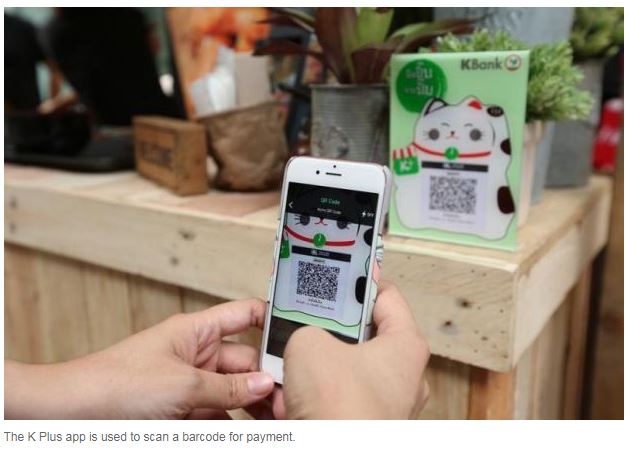Thailand: Banks extend QR code platforms across Asia
Several banks are poised to expand the scope of QR code payment service abroad, aiming to advance efforts towards a cashless society.
Banks are seeking entry to regional markets under two business models, standardised QR payment and bank sponsorship, said Thai Bankers’ Association chairman Predee Daochai.
Each bank will make its own decision on which model it prefers, he said.
Under the standardised model, the National Interbank Transaction Management and Exchange Co, the country’s payment system provider, plans to connect the standardised payment system with South Korea under the Asean Payment Network scheme.
For the bank sponsorship model, Bank of Ayudhya (BAY) is an example. The country’s fifth-largest bank by assets has cooperated with its Japanese major shareholder, Mitsubishi UFJ Financial Group, to launch a cross-border QR code system, enabling BAY customers to scan the Thai QR code with any banking app at leading shopping malls and popular stores throughout Japan, starting in December 2018.
The Bank of Thailand and its Cambodian counterpart are reportedly working together on a QR code payment system in 2019.
In other news, Mr Predee said the TBA will speed the launch of the white-label ATM project as the group looks to start the ATM pool system this year.
The white-label concept is a pool network for cash withdrawals run by a company instead of individual banks.
Given that the network will be run by a particular firm, the cost of expanding the number of ATMs, maintenance, replacement and management will be shared among various banks, cutting costs for the industry.
The white-label concept will also help reduce the number of overlapping ATMs in each area and better expand cash machines into remote areas, providing those who live upcountry with better access to financial services such as bill payment, cash withdrawal and mutual fund investment.
Banks have discussed the programme for a while, with two or three business models proposed, but a conclusion has not been reached, Mr Predee said.
The association expects to finalise costs, fees and the return-sharing formula for the project later.
Mr Predee said demand for traditional channels such as ATMs and brick-and-mortar branches still prevails despite the strong growth of digital banking, though physical outlets will gradually decrease in line with consumers’ changing lifestyles in the digital age.
According to Bank of Thailand data as of November 2018, the banking sector had 6,708 branches nationwide, down from 6,784 at the end of 2017.
Source: https://www.bangkokpost.com/business/news/1607986/banks-extend-qr-code-platforms-across-asia


 Thailand
Thailand




